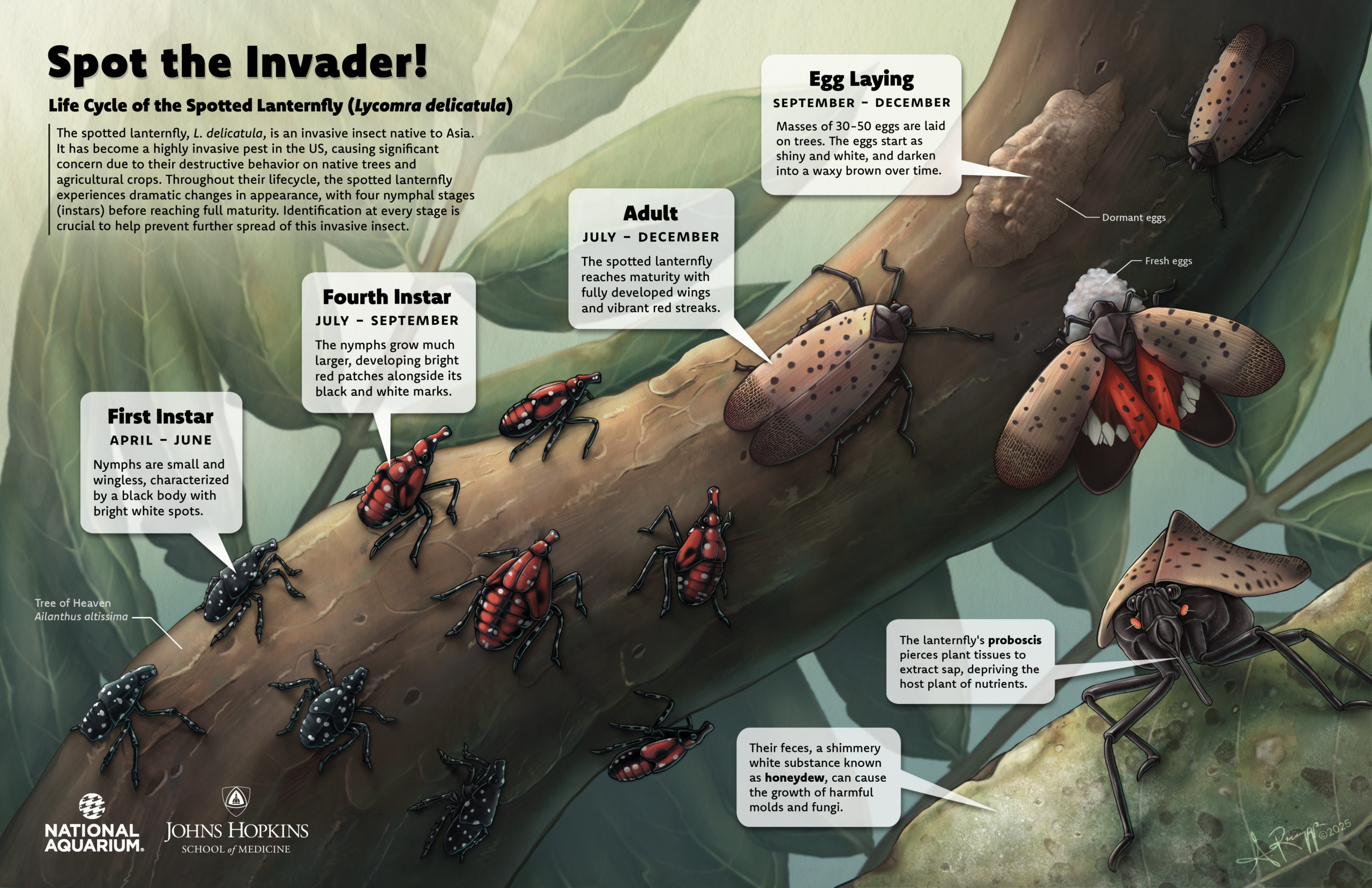Spot the Invader!
Year
2024
Content Expert
National Aquarium in Baltimore
Hallie Carter
Sarah Ahart
Jeff Day, MD, MA
Tim Phelps, MS
Medium
Photoshop, graphite
About
This illustration depicts four notable stages in the lifecycle of the spotted lanternfly, created to increase public recognition and proactive eradication of this invasive species. While the adult form is well-known, earlier stages often go unrecognized, emphasizing the need for awareness of the various lifecycle stages and their seasonal presence.
Additionally highlighted are the detrimental ecological effects of the spotted lanternfly, such as physical damage to tree leaves via its proboscis, and the subsequent growth of mold and fungus due to its honeydew excrement. This context underscores the critical need for early detection and action.
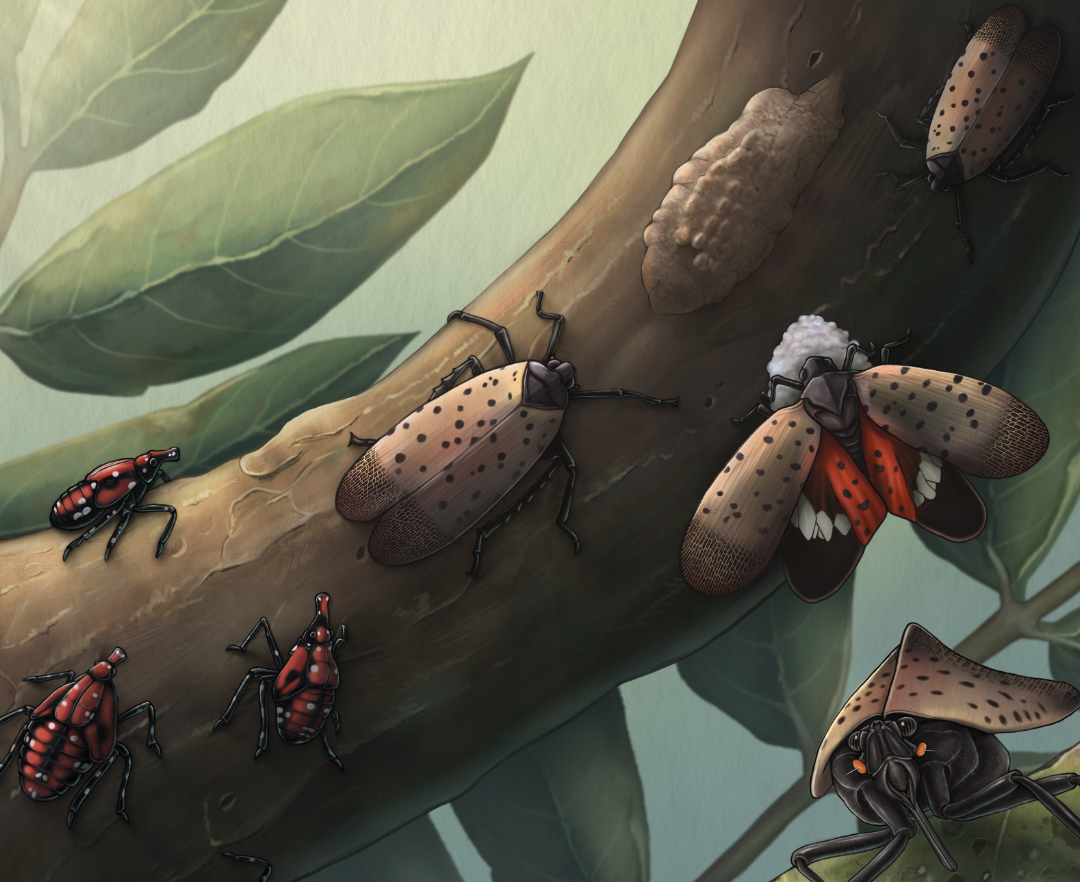
The spotted lanternfly can usually be found climbing trees and wreaking havoc on its surroundings.
Background
The spotted lanternfly (Lycorma delicatula) is one of the most recognizable and destructive invasive species in the US, easily identified by its speckled forewings and iconic red hindwings. As an invasive species, the SLF causes immeasurable damage to the environment and is attributed to the widespread destruction of crops, weakening of native plant populations, and disruption of local ecosystems.
The SLF feeds on the sap of a wide range of plants and trees. In the process, it excretes a sugary substance called “honeydew”, which promotes the growth of sooty mold, a black fungus that coats leaves and bark, interfering with photosynthesis. These feeding habits threaten agriculture and forestry industries, and alter the balance of ecosystems the insect invades.
Creating the Illustration
For the illustration, I wanted to move away from the traditional circular life cycle format. Instead, I chose a linear composition to highlight the insect’s progression more naturally. This approach would also give me the room to feature elements of its environment, including the specific trees it tends to inhabit (namely, the tree of heaven, or Ailanthus altissima) and the insect’s typical behaviors.
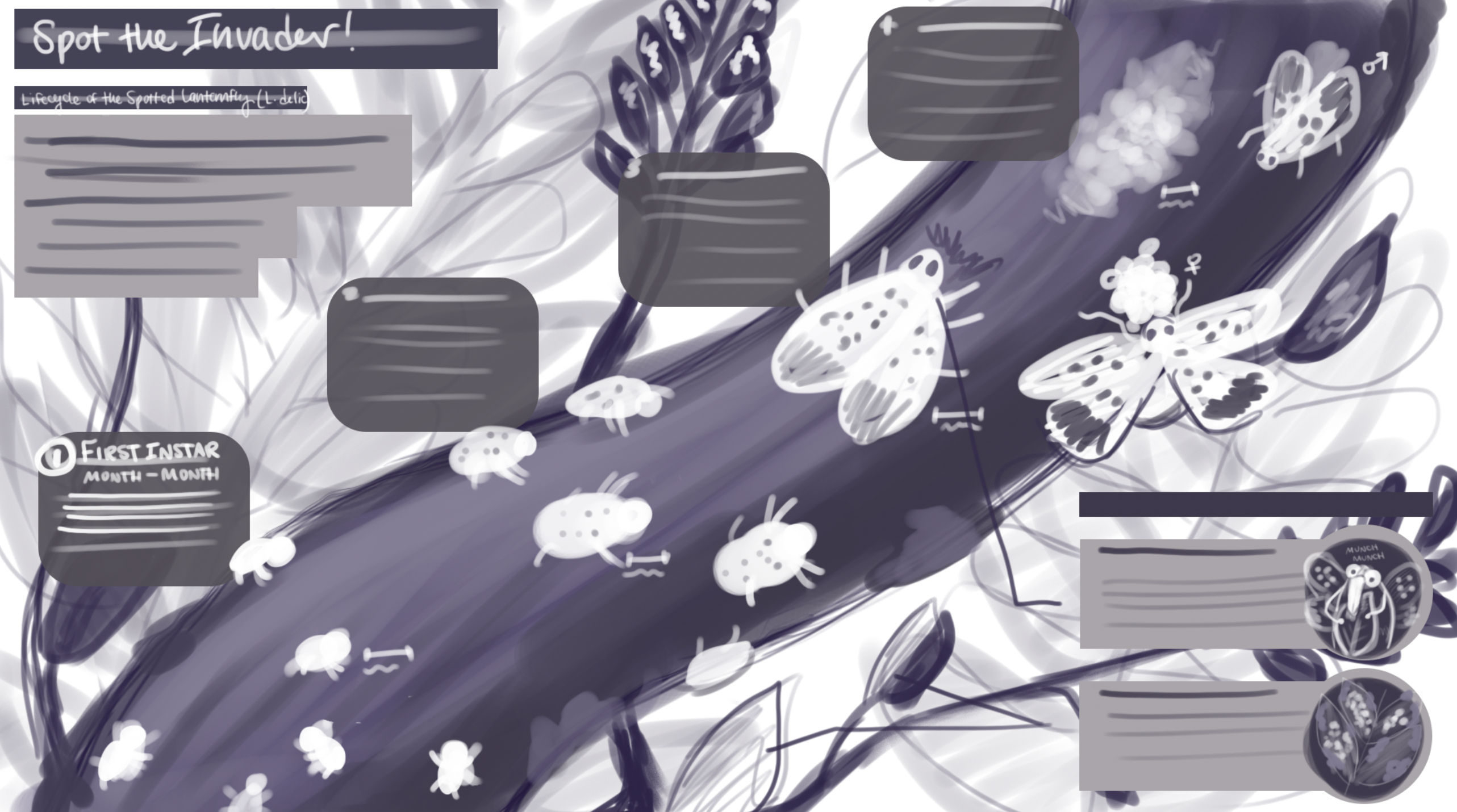
Initial thumbnail sketch for the illustration.
Illustration-wise, I aimed for a painterly look in the environment to give the scene a natural, atmospheric feel. I chose not to overly stylize the insects themselves, since the goal of the piece was to help viewers recognize the SLF in real-life settings. The background features another invasive species in the US, the tree of heaven, and its distinctive leaves. I was told by my contact expert that the SLFs “really love those trees” and are commonly found on them. I guess even invasive species have to stick together out in the wild.
In terms of content and storytelling, we chose to depict the first instar, fourth instar, adult stage, and egg laying phase. Since the differences between instars 1 through 4 are fairly subtle, we focused on the most visually distinct stages to highlight the insect’s transformation throughout its life cycle. We also included a small inset to illustrate the damage the SLF inflicts on vegetation in the environments it invades.
Luckily, living in Baltimore, references for these little guys were very easy to come by. Sometimes, they even flew right at me.
Once the sketches and narrative content were approved, I completed the final rendering in Photoshop. This illustration is currently on display at the Baltimore National Aquarium.
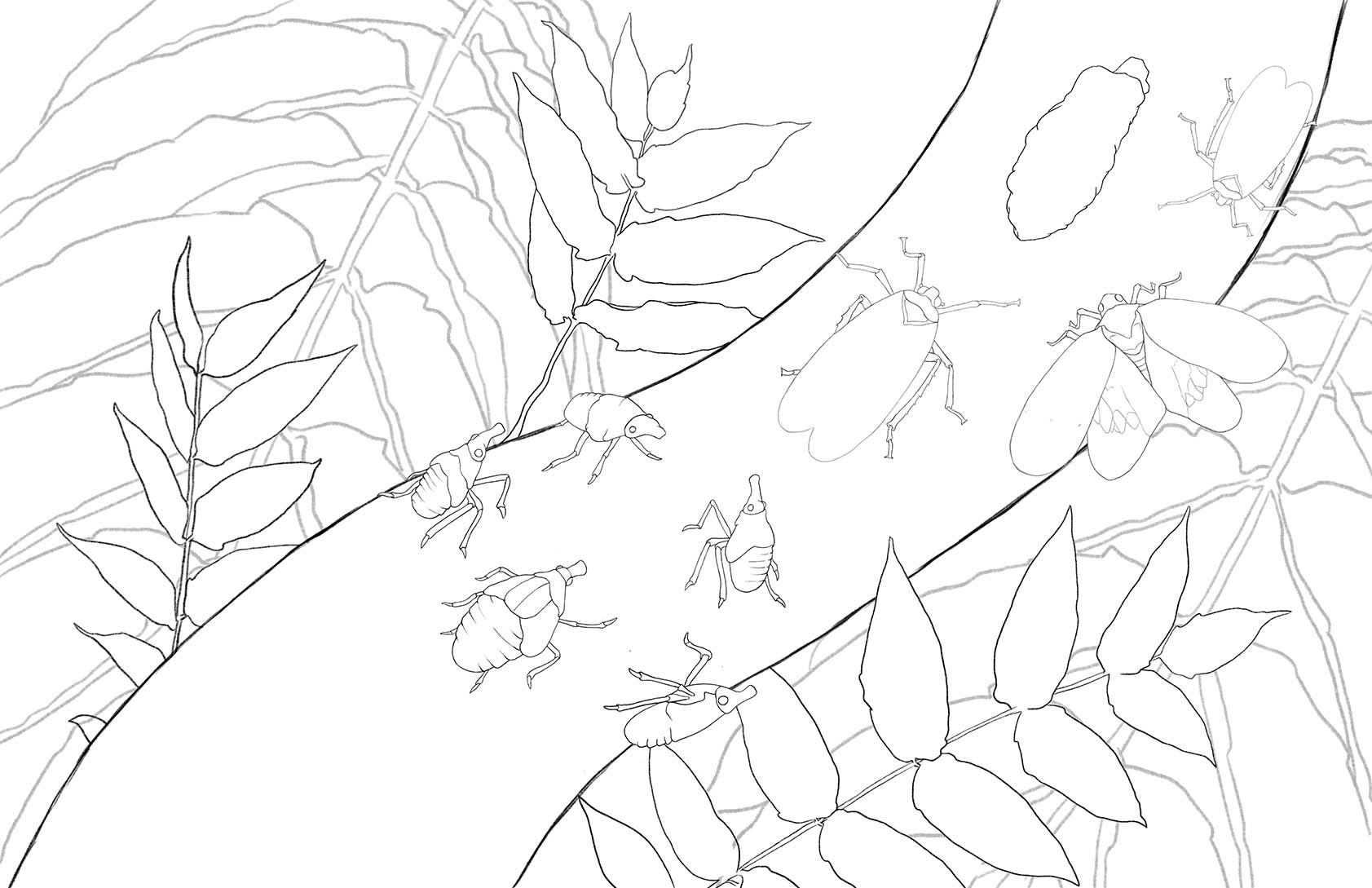
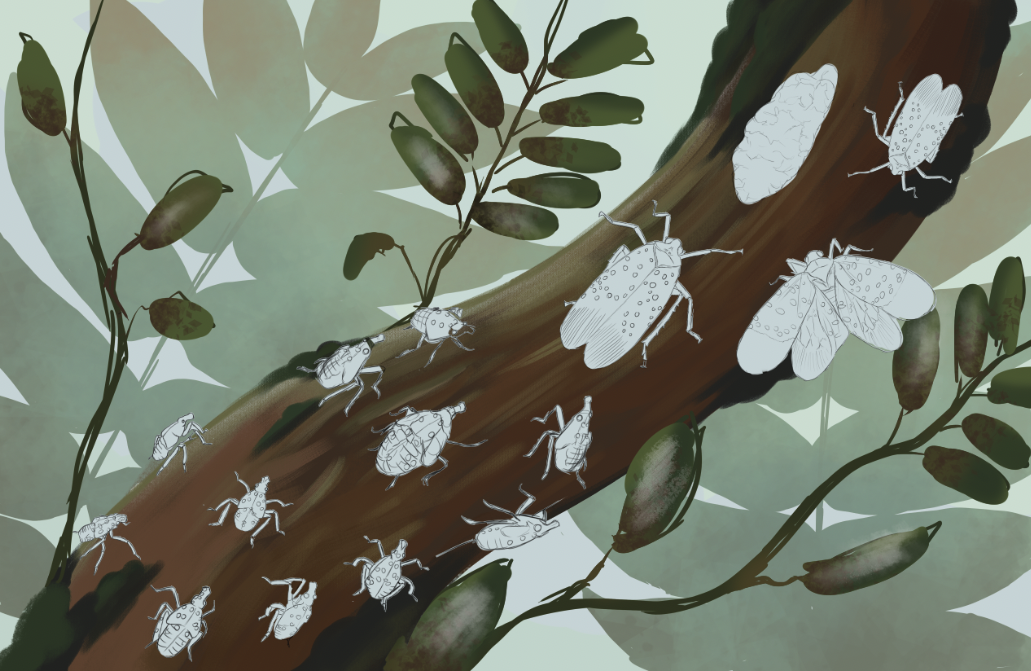
Sketch and color draft planning the layout and color scheme.

